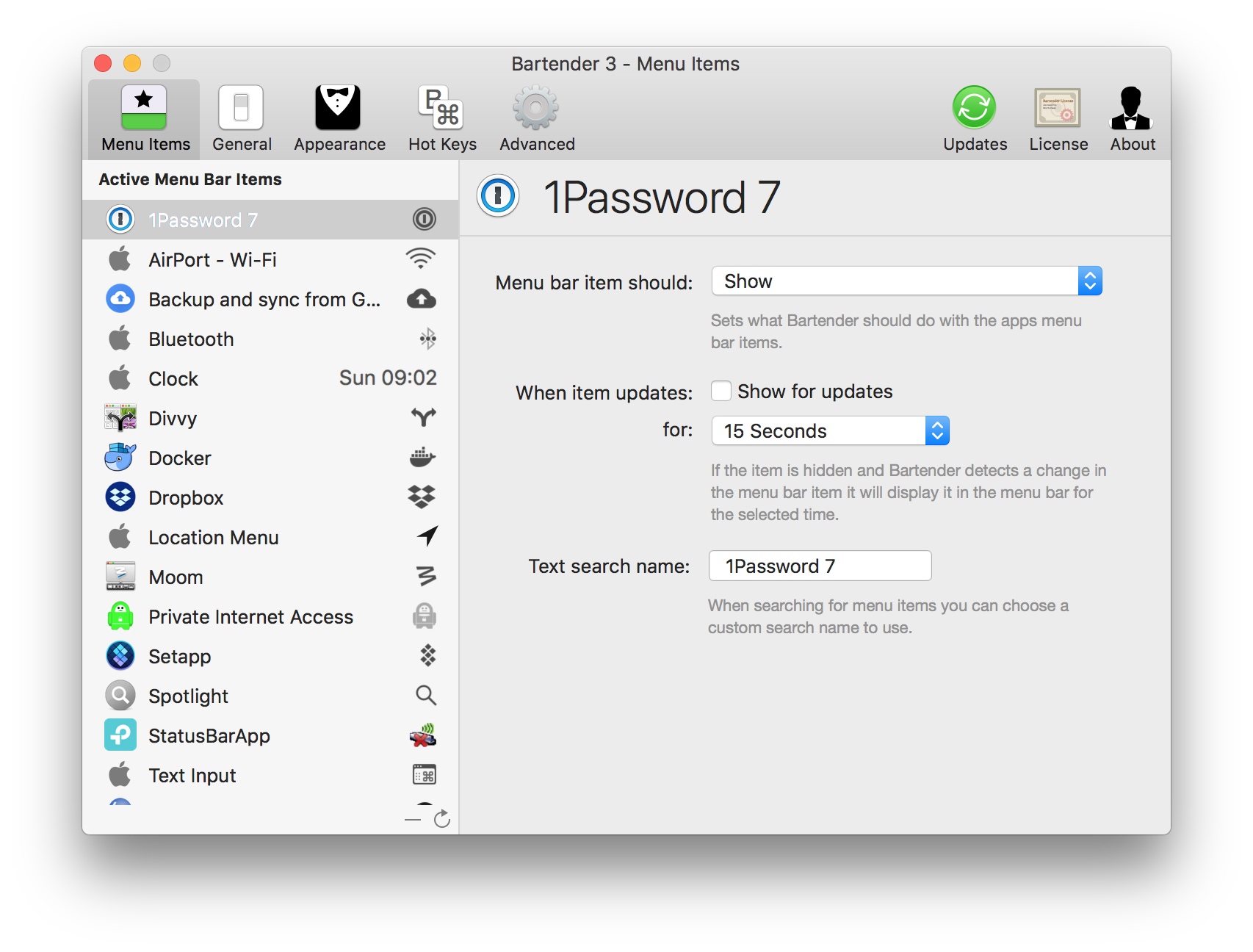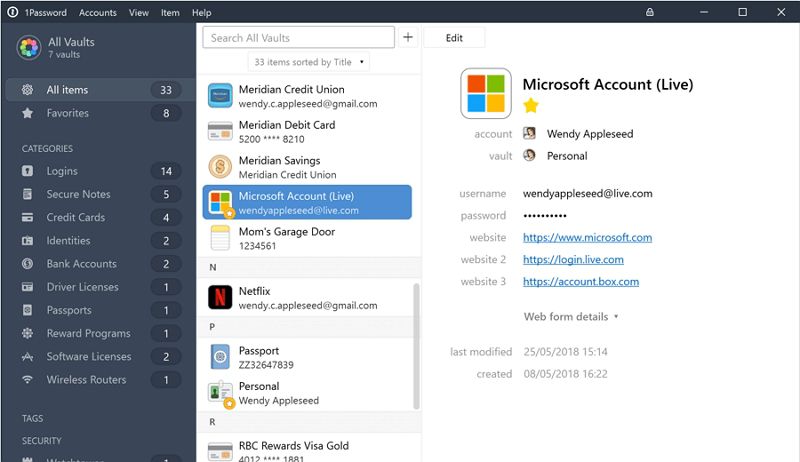- So let’s see whether the problems with the operator come from using a wrongful 1password binary: The 1password op binary behaved correctly: since we provided fake data, it couldn’t sign into 1password domain, but it didn’t end up with the panic message. So, the problem is not within the 1password binary.
- Before you get started, you’ll need a deployment environment with Docker or Kubernetes to deploy the Connect server. Step 1: Set up a Secrets Automation workflow To get started, set up a Secrets Automation workflow and get your Connect server credentials and first access token.
- With 1Password Business, you can create a custom group to manage who can access Secrets Automation. Then add the group to the Secrets Automation managers: Sign in to your account on 1Password.com and click Integrations in the sidebar.; Click the Permissions tab and choose Secrets Automation.; Click Manage and select the groups who can manage Secrets Automation, and click.
With 1Password Business, you can automate many common administrative tasks using the 1Password SCIM bridge. It uses the System for Cross-domain Identity Management (SCIM) protocol to connect 1Password with your existing identity provider, like Azure Active Directory, Okta, OneLogin, or Rippling, so you can.
This document describes how to set up Windows 10 for cross-platform development (Go, NodeJS, etc) with Windows Subsystem for Linux (WSL).
1password Docker Software
Resources
Most of the information here is collected from

WSL Setup
- Download Brave beta and Firefox browsers, make either default.
- Install 1Password for Windows, sign into personal and company accounts.
- Add 1Password X extension in Brave and Firefox
- Enable WSL and install latest version of Ubuntu from Microsoft Store
- Create C:home directory, move user's home folder there and update
/etc/passwdwith the new location
Default User
Ubuntu will create a default user on the initial run. It can also be done manually:
- Create new user in Ubuntu:
useradd -Um roustem - Make sure that user is added to
sudoers - Change default user (using PowerShell Admin):
Install Ubuntu Apps
Go
NodeJS
Yarn
GPG and Git
Debugging gpg signing:
Google Cloud SDK
Install Windows Apps
- Visual Studio Code
- Git
- Go
- WSLtty
- Gpg4win
- Ditto
Configure git
After installing Go, press Win-S, type PATH and change the GOPATH to C:homeroustemgo. This will make sure that GOPATH is shared with WSL and Go can pickup all libraries and vendored code.
Solving Git interoperability with WSL
Also, make sure that local .git/config file has correct settings as well.
Note: you might have to do this without --global in the repo as well.
MinGW (optional)
Install MinGW to get access to make and other command line tools. Update PATH to Include
Improving WSL Performance
Based on Speeding up WSL I/O .., turn off Windows Defender protection for some folders and processes:
Exclude folder: %USERPROFILE%AppDataLocalPackagesCanonicalGroupLimited.UbuntuonWindows_79rhkp1fndgscExclude processes:
- git
- node
- npm
- dpkg
- go
Securing Docker
Configure Ditto
Set keyboard shortcut to Alt-VExclude 1Password binaryAdd image clipboard type

Miscellaneous Windows Tips
Keyboard Shortcuts:
Cmd-Shift-S– take a screenshot and save it to clipboardWin-.– show emoji panel (see Advanced Keyboard settings to control if emoji panel closes automatically)Configure system and user path:Win-S, type 'PATH'Configure taskbar:Cmd-S, type 'system icons'
This guide shows you how to securely load secrets into GitHub Actions and sync them automatically using the SecretHub env-export action. To demonstrate the use of this action, the guide will walk you through loading credentials for a Docker registry and publish a docker image from your GitHub workflow.
“Just show me the code”
If you prefer to just go straight to the end result, have a look at the example code on GitHub.
Before you begin
Before you start, make sure you have completed the following steps:
- Set up SecretHub on your workstation.
Step 1: Write your secrets
If you haven’t done so already, store your secrets on SecretHub. You can use the following commands to get everything set up:
secrethub repo initto create a repositorysecrethub mkdirto create a directorysecrethub writeto write some secrets
1password Docker Download
In the examples we’ll be using two secrets which store your docker credentials: company/app/docker/username and company/app/docker/password, but the same principle applies to all secrets.
Step 2: Create a SecretHub service account

SecretHub uses service accounts to grant non-human parties, such as GitHub Actions access to secrets.
Create a service account that has read access to your Docker credentials by running:
Gta online macbook. This command will create a service account for the company/app repository and grants it read permission on the docker directory. It outputs the credential of the service account, which you’ll need in the next step.
Step 3: Pass the credential to the GitHub action
To allow your GitHub Action to access the previously created credential, store it in a GitHub Secret.
- On GitHub, navigate to the main page of your repository.
- Under your repository name, click Settings.
- In the left sidebar, click Secrets.
- Click New secret.
- Type
SECRETHUB_CREDENTIALin the Name input box and set the secret value to the credential from the previous step. - Click Add Secret
Step 4: Write your GitHub Action
Finally, you can write your GitHub Action for publishing a Docker container:
1password Docker Extension

The SECRETHUB_CREDENTIAL environment variable is set to the secret value configured in the previous step. The secrethub/actions/env-export action uses this credential to authenticate to the SecretHub API and fetch any required secrets.

Note that the DOCKER_USERNAME and DOCKER_PASSWORD environment variables are set to secret references (secrethub://) that point to the secrets written in Step 1. The GitHub Action replaces these references with their corresponding secret values, which are later used to authenticate to the Docker registry.
See also
- For more details about the SecretHub GitHub action, check it out in the marketplace.
- For more details about SecretHub services check out the documentation.
- For more details about using environment files with SecretHub, check out the documentation.
Happy coding! Telecharger covadis 16 crack.
